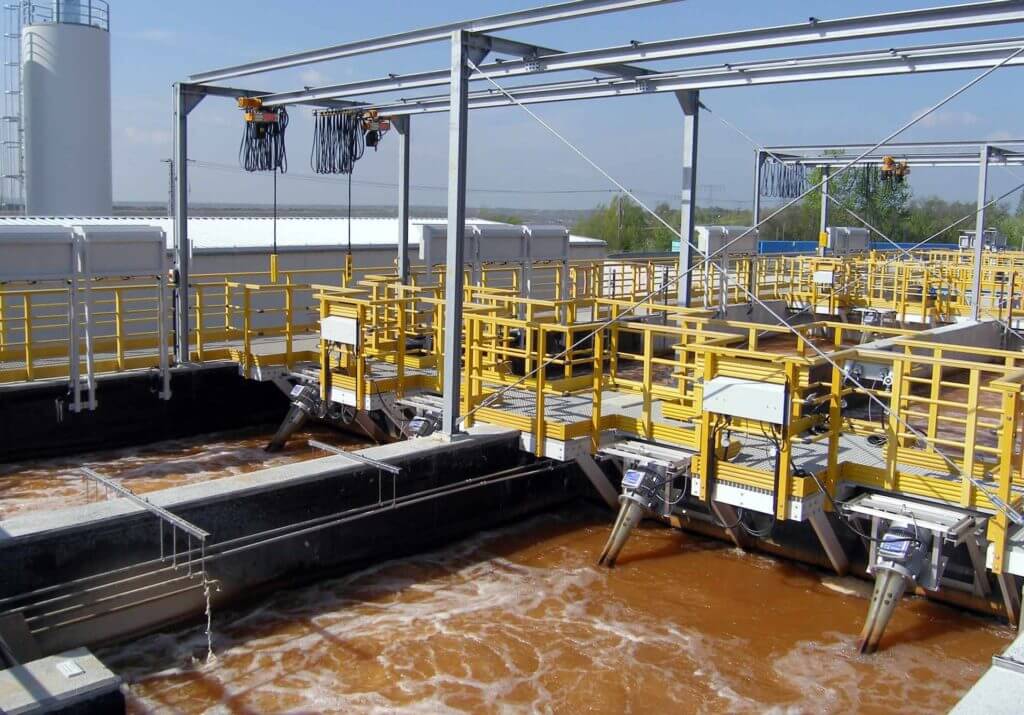Industrial Waste Water Treatment-- Tailored Solutions for Effective Wastewater Treatment
Industrial Waste Water Treatment-- Tailored Solutions for Effective Wastewater Treatment
Blog Article
Trick Strategies in Hazardous Waste Water Treatment Processes
The treatment of industrial wastewater is an essential aspect of environmental administration, entailing a range of techniques created to minimize the influence of contaminants. Developments in innovations such as membrane layer purification and progressed oxidation procedures supply innovative services for improving treatment effectiveness.
Physical Therapy Techniques
Just how properly can physical therapy approaches resolve the intricacies of commercial wastewater? Physical therapy approaches play a crucial duty in the initial phases of wastewater monitoring, concentrating mostly on the elimination of solids and big particulates. Methods such as flotation protection, filtering, and sedimentation are vital for minimizing the concentration of suspended solids, thereby boosting the performance of subsequent therapy procedures.
Sedimentation includes the gravitational settling of solids, permitting for the splitting up of much heavier products from the wastewater. This approach is specifically reliable in clarifying water prior to organic or chemical therapies.
Furthermore, flotation approaches, which make use of air bubbles to lift suspended solids to the surface area for removal, work in treating wastewater with high concentrations of fats, oils, and oils. Generally, physical treatment methods function as an important initial step in the detailed monitoring of commercial wastewater, ensuring that the load on succeeding therapy phases is decreased and improving general treatment efficacy.
Chemical Therapy Strategies
While physical treatment methods lay the groundwork for efficient wastewater monitoring, chemical treatment strategies are essential for attending to the more complex pollutants usually found in commercial effluents. These approaches use various chemical agents to speed up, counteract, or oxidize harmful compounds, making certain a more thorough elimination of toxins.
One usual strategy is coagulation and flocculation, where chemical coagulants such as aluminum sulfate or ferric chloride are contributed to promote the aggregation of suspended fragments. This procedure boosts solid-liquid separation, lowering turbidity and enhancing water high quality. Furthermore, neutralization processes are used to adjust the pH of wastewater, making use of bases or acids to counteract acidic or alkaline streams, respectively.
Oxidation-reduction reactions play an important role in derogatory natural impurities and microorganisms. Chemical oxidants like chlorine, ozone, or hydrogen peroxide are made use of to break down complicated natural substances, making them less damaging or a lot more eco-friendly. Advanced oxidation processes (AOPs) integrate several oxidation methods to improve contaminant elimination effectiveness.
Organic Therapy Procedures
The efficiency of wastewater treatment is substantially enhanced by biological treatment processes, which harness the natural metabolic tasks of microbes to decay raw material and get rid of toxins. Industrial Waste Water Treatment. These procedures mostly include cardiovascular and anaerobic digestion, each customized for details kinds of wastewater
Cardio therapy processes use oxygen to support microbial growth, advertising the failure of natural contaminants into co2 and water. Typical techniques include turned on sludge systems, where oygenation storage tanks facilitate the blending of wastewater with microbes, and dripping filters, which encourage biofilm growth on media surface areas.
On the other hand, anaerobic treatment procedures occur in the lack of oxygen, using anaerobic microorganisms to disintegrate more information raw material, site here resulting in biogas production, a renewable resource source. Anaerobic digesters are frequently used in industrial setups for this function, efficiently lowering the volume of sludge while creating valuable biogas.
The option of a biological therapy technique relies on wastewater attributes, treatment goals, and regulatory requirements. The integration of biological procedures in wastewater treatment not just enhances contaminant removal effectiveness however also promotes sustainability by reducing chemical usage and supporting source recovery.
Advanced Oxidation Processes

Common AOP methods consist of Fenton's photocatalysis, reagent, and ozonation. Fenton's reagent, a combination of hydrogen peroxide and ferrous iron, catalyzes the formation of hydroxyl radicals, making it reliable for dealing with wastewater including phenolic compounds and various other stubborn substances.
AOPs use a number of benefits, consisting of reduced sludge production and the capability to treat wastewater with high focus of natural pollutants. However, the application of AOPs calls for mindful factor to consider of functional parameters and cost-effectiveness, guaranteeing that these sophisticated strategies are suitably incorporated right into existing wastewater treatment systems.
Membrane Filtering Technologies

Microfiltration works for getting rid of put on hold germs and solids, while ultrafiltration targets smaller natural particles and infections. Nanofiltration links the void between ultrafiltration and reverse osmosis, efficiently eliminating natural substances and divalent ions. Reverse osmosis gives the highest possible level of purification, used largely for desalination and removing mono-valent ions.
Membrane technologies provide many benefits, consisting of low energy usage compared to standard treatment techniques, modular style for scalability, and the capacity for water healing and reuse. Nevertheless, difficulties such as membrane fouling and the need for regular maintenance have to be resolved to make certain system efficiency. Generally, membrane layer filtering innovations represent a vital part of modern industrial wastewater treatment approaches, advertising sustainability and resource conservation in water monitoring.
Final Thought
In conclusion, commercial wastewater therapy employs a varied array of methods, consisting of physical, chemical, biological, and progressed approaches. Continued improvements in these methodologies will better improve the effectiveness and performance of wastewater treatment processes in commercial setups.
The treatment of industrial wastewater is an essential aspect of environmental monitoring, entailing a range of strategies designed to reduce the effect of contaminants.Just how successfully can physical treatment approaches address the complexities of industrial wastewater?Advanced oxidation processes (AOPs) stand for a sophisticated approach in industrial wastewater treatment, developed to successfully weaken natural toxins that are frequently resistant to traditional treatment techniques (Industrial Waste Water Treatment).In final thought, industrial wastewater treatment utilizes a diverse range of methods, including physical, chemical, biological, and advanced methods. Continued developments in these approaches will even more improve the efficiency and effectiveness of wastewater therapy procedures in commercial setups
Report this page